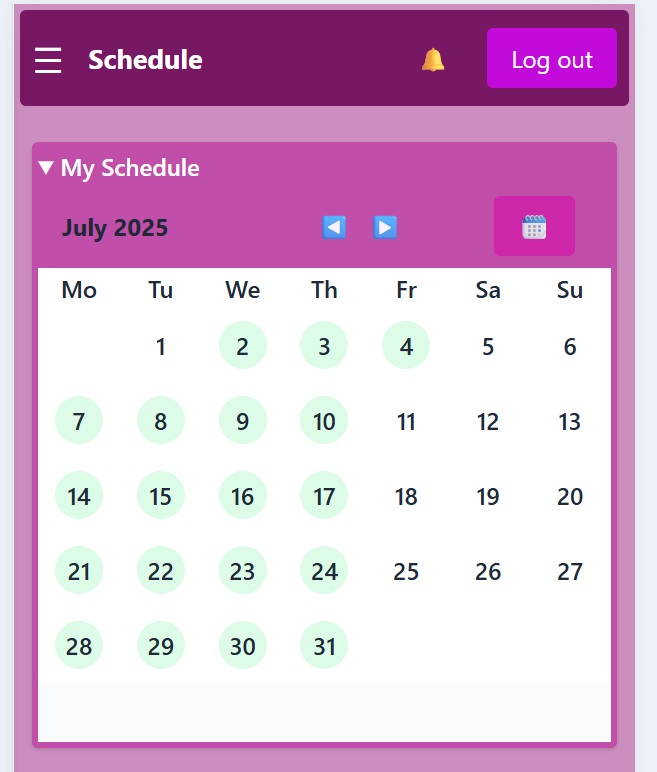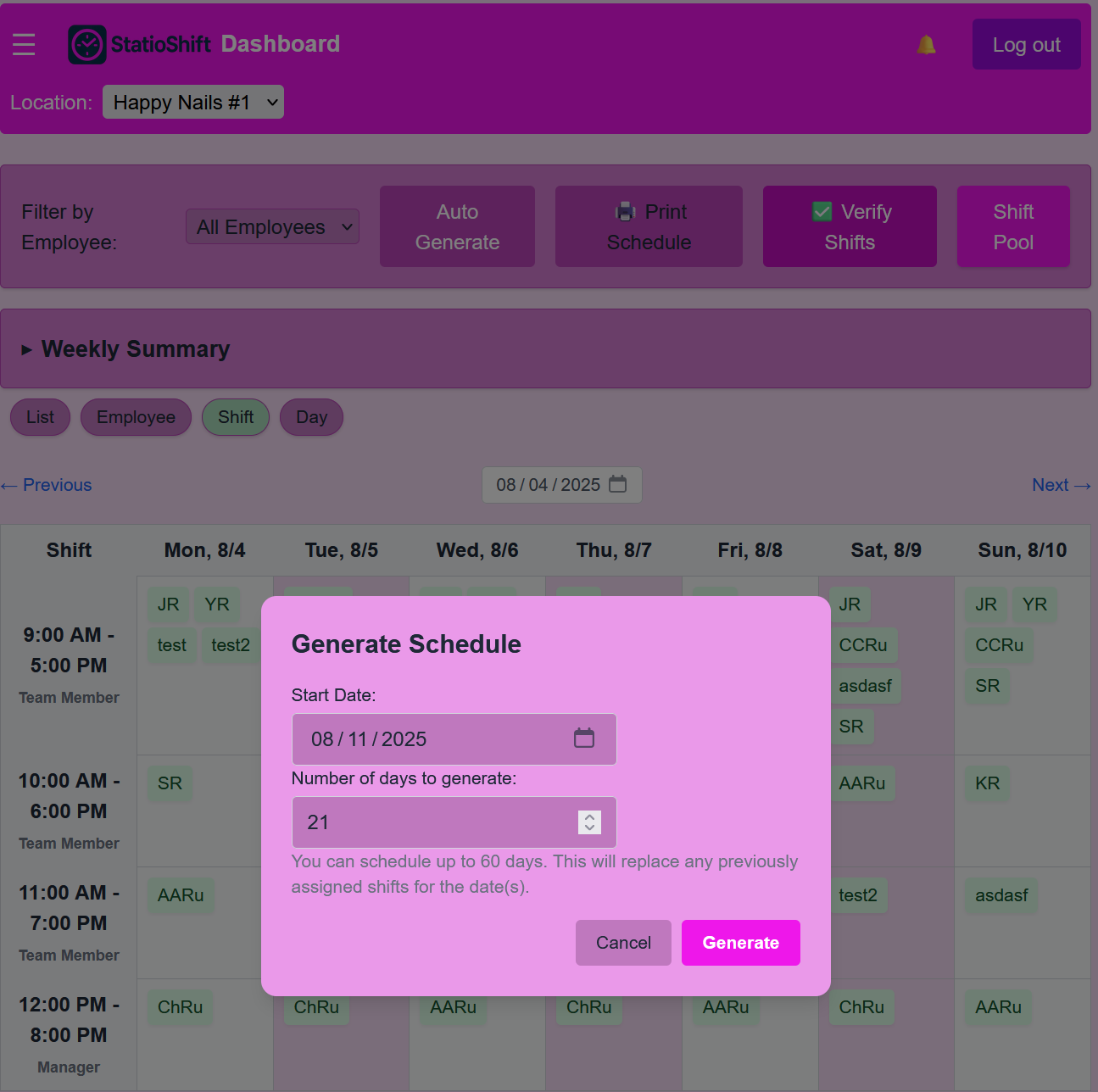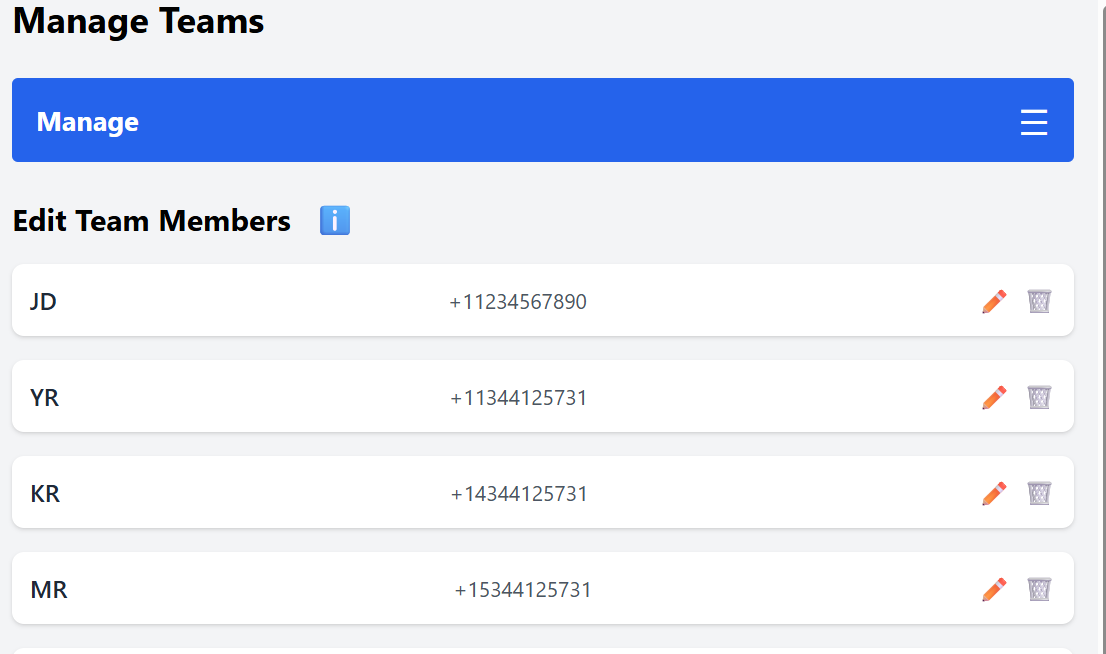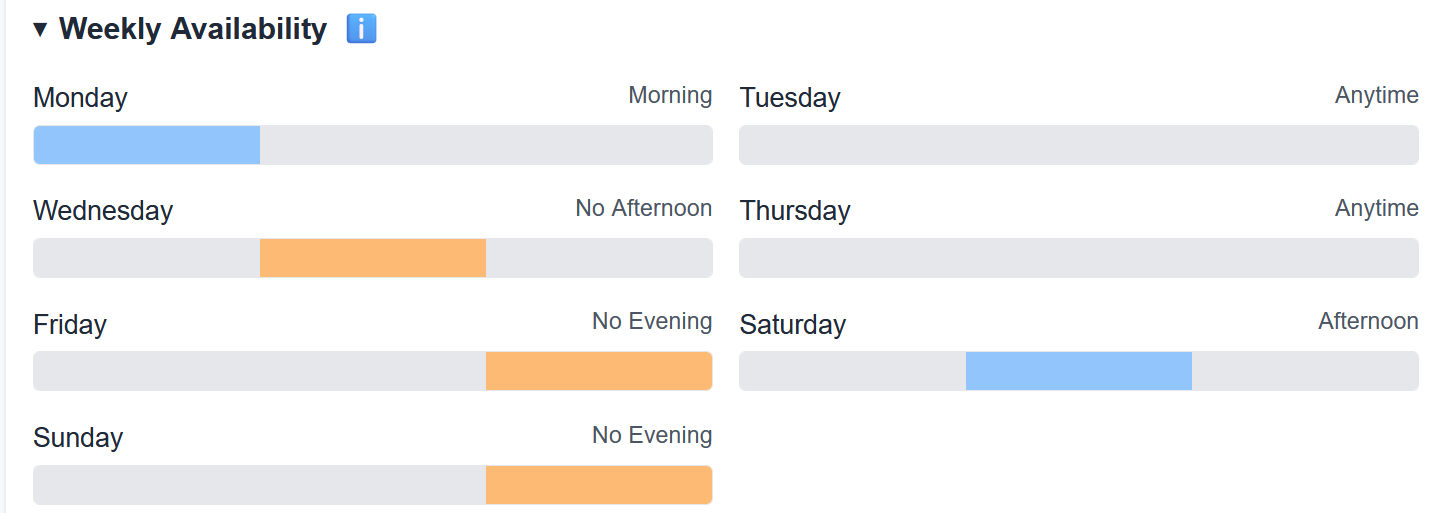Top Shift Management Software Trends for Small Businesses in 2025
How StatioShift Solves Key Challenges
As small businesses navigate the evolving landscape of workforce management in 2025, shift management software has become a critical tool for streamlining operations, boosting efficiency, and enhancing employee satisfaction. With rapid advancements in technology and changing workplace dynamics, small businesses face unique challenges in scheduling and managing their teams. This blog post explores the latest trends in shift management software for small businesses, highlights key issues, and demonstrates how StatioShift provides innovative solutions to address these challenges, positioning it as a leading choice for small business owners.
Key Trends in Shift Management Software for Small Businesses in 2025
The shift management software industry is undergoing significant transformation, driven by technological innovation and the unique needs of small businesses. Here are the top trends shaping the industry in 2025:
1. AI-Driven Automation and Predictive Scheduling
Artificial intelligence (AI) is revolutionizing shift scheduling by enabling automated, data-driven decisions. AI-powered tools analyze employee availability, skill sets, and business demand to create optimized schedules, reducing manual effort and minimizing scheduling conflicts. Predictive analytics also help small businesses forecast staffing needs based on historical data and trends, ensuring proper coverage during peak times. According to industry insights, businesses using data-driven scheduling can improve productivity by 5-10%.
2. Mobile Accessibility and Employee Self-Service
Mobile apps are now a cornerstone of shift management software, allowing employees to view schedules, request time off, swap shifts, and communicate with managers in real-time from their smartphones. This trend empowers employees with greater control over their schedules, fostering a self-service culture that enhances work-life balance and reduces administrative burdens for managers. A Harvard Business Review study notes a 30% increase in productivity when employees are offered schedule flexibility.
3. Industry-Specific Features
Small businesses in sectors like retail, hospitality, and healthcare require tailored scheduling solutions. Software providers are increasingly offering features like demand forecasting for retail, compliance tracking for healthcare, or time tracking for remote workers. These specialized tools ensure that scheduling aligns with industry-specific operational needs.
4. Cost Management and Labor Optimization
Controlling labor costs is a top priority for small businesses. Shift management software now includes robust reporting and analytics tools that provide real-time insights into labor expenses, attendance trends, and scheduling efficiency. These features help business owners optimize staffing levels, reduce overtime, and align schedules with sales forecasts to boost profitability.
5. Compliance with Labor Laws
Compliance with local labor laws and regulations, such as overtime policies and rest requirements, is critical for small businesses to avoid penalties. Modern shift management tools incorporate configurable compliance settings to ensure schedules adhere to legal standards, particularly in industries with complex labor regulations like healthcare and hospitality.
6. Employee-Centric Scheduling and Engagement
Employee satisfaction is a growing focus, as small businesses aim to reduce turnover and improve retention. Software that allows employees to input their availability, bid on open shifts, or swap shifts fosters a sense of autonomy and engagement. This trend aligns with the increasing demand for flexible, employee-centric scheduling practices.
Challenges for Small Businesses in Shift Management
While these trends offer exciting opportunities, small businesses face several challenges in adopting and leveraging shift management software:
- Limited Budgets: Many small businesses operate on tight budgets, making it difficult to invest in feature-rich software without clear cost benefits.
- Complex Implementation: Small teams often lack dedicated HR staff, making it challenging to onboard and train employees on new software.
- Balancing Flexibility and Compliance: Ensuring schedules meet both employee preferences and legal requirements can be time-consuming and complex.
- Integration Needs: Small businesses often use multiple tools (e.g., payroll, time tracking), and seamless integration is essential to avoid manual data entry and errors.
- Scalability: As small businesses grow, their scheduling needs become more complex, requiring software that can scale without becoming cost-prohibitive.
How StatioShift Addresses These Trends and Challenges
StatioShift is a modern, user-friendly shift management software designed specifically for small businesses. By aligning with the latest industry trends and addressing common pain points, StatioShift empowers small business owners to streamline scheduling, enhance employee engagement, and optimize operations. Here’s how StatioShift tackles the trends and challenges outlined above:
1. AI-Driven Automation for Effortless Scheduling
StatioShift leverages AI-powered automation to simplify the scheduling process. Its intelligent algorithms analyze employee availability, skills, and business demand to create conflict-free schedules in minutes. For small businesses without dedicated HR teams, this automation reduces the time spent on manual scheduling, allowing owners to focus on core operations.
2. Mobile Accessibility for On-the-Go Management
StatioShift’s mobile app enables employees to access schedules, request time off, and swap shifts from their smartphones, promoting flexibility and reducing administrative tasks for managers. Real-time notifications keep teams informed about schedule changes or shift approvals, enhancing communication and engagement.
3. Tailored Features for Small Business Needs
Unlike one-size-fits-all solutions, StatioShift offers customizable features tailored to industries like retail, restaurants, and healthcare. For example, its demand forecasting tools help retail businesses align staffing with sales trends, while compliance tracking ensures healthcare businesses meet regulatory requirements.
4. Cost Management and Transparent Reporting
StatioShift’s robust reporting tools provide real-time insights into labor costs, attendance trends, and scheduling efficiency. Small business owners can set labor budgets, compare actual costs against projections, and identify cost-saving opportunities.
5. Compliance Made Simple
StatioShift incorporates configurable compliance settings to ensure schedules adhere to local labor laws, such as overtime limits and mandatory rest periods. This feature is particularly valuable for small businesses in regulated industries like healthcare and hospitality.
6. Employee-Centric Tools for Engagement
StatioShift prioritizes employee satisfaction with self-service features like shift bidding, swap requests, and availability updates. These tools empower employees to take control of their schedules, fostering a sense of autonomy and reducing turnover.
7. Seamless Integration and Scalability
StatioShift integrates seamlessly with popular payroll and time-tracking systems, eliminating the need for manual data entry and reducing errors. Additionally, StatioShift’s scalable design ensures it can grow with your business.
8. Affordable and User-Friendly for Small Businesses
Designed with small businesses in mind, StatioShift offers affordable pricing plans that deliver enterprise-level features without breaking the bank. Its intuitive interface requires minimal training, making it ideal for teams without dedicated HR staff.
Why Choose StatioShift in 2025?
StatioShift stands out as a comprehensive, affordable, and user-friendly solution for small businesses seeking to modernize their shift management processes. By leveraging AI-driven automation, mobile accessibility, and industry-specific features, StatioShift addresses the latest trends in workforce management while solving common challenges like limited budgets, compliance, and scalability. Its focus on employee engagement and cost optimization makes it an ideal choice for small businesses in retail, hospitality, healthcare, and beyond.
Whether you’re a small retail store managing seasonal staff or a restaurant juggling complex shift patterns, StatioShift empowers you to create efficient, compliant, and employee-friendly schedules with ease. Its seamless integrations and robust reporting tools ensure you have the insights and flexibility needed to stay competitive in 2025.
Conclusion: Elevate Your Small Business with StatioShift
As shift management software evolves to meet the demands of small businesses, staying ahead of the curve is essential for operational success. StatioShift combines cutting-edge technology with practical, small-business-friendly features to deliver a solution that not only addresses current trends but also solves real-world challenges. By choosing StatioShift, small business owners can streamline scheduling, reduce costs, ensure compliance, and create a happier, more productive workforce.
Ready to transform your shift management? Visit StatioShift.com to explore its features, request a demo, or start a free trial today. Take the first step toward smarter workforce management and position your small business for success in 2025 and beyond.
Disclaimer: This blog post is based on industry trends and insights gathered from various sources. For the most up-to-date information on StatioShift’s features and pricing, please visit StatioShift.com.



